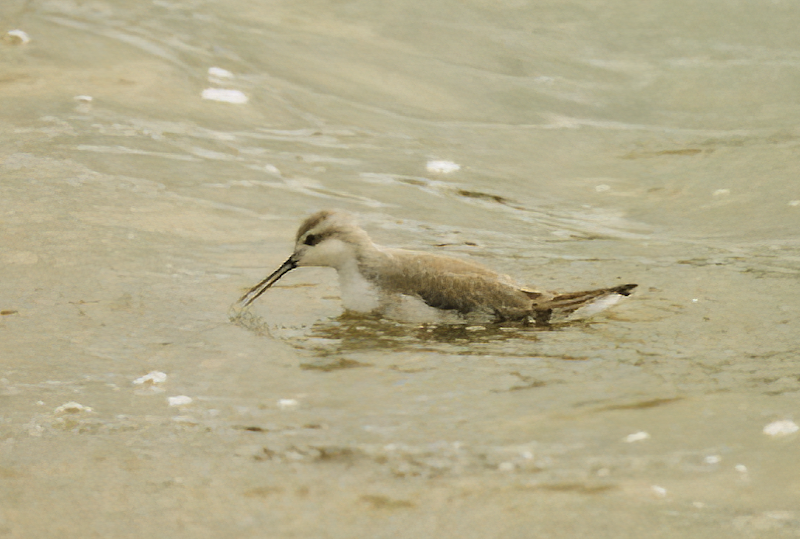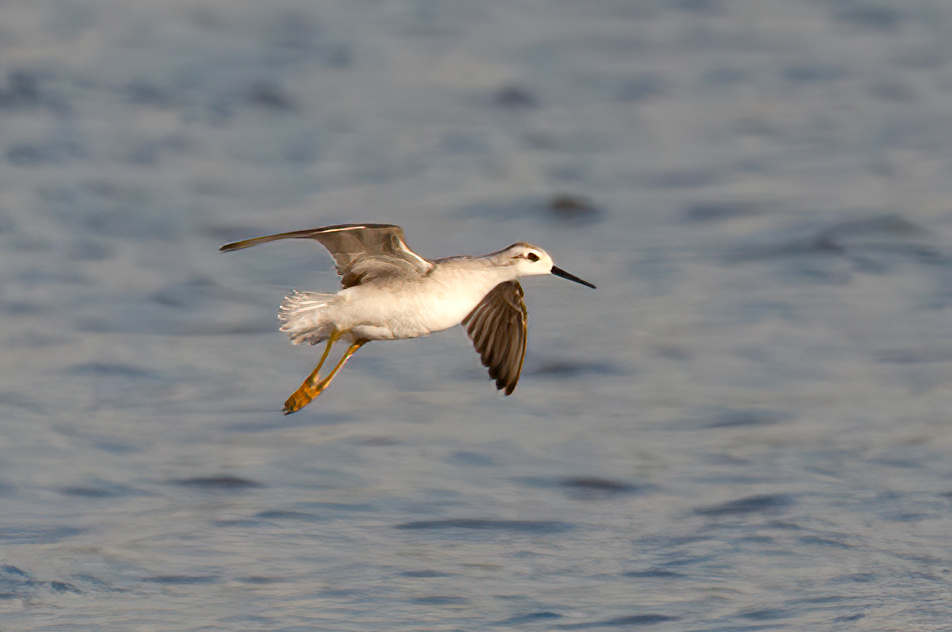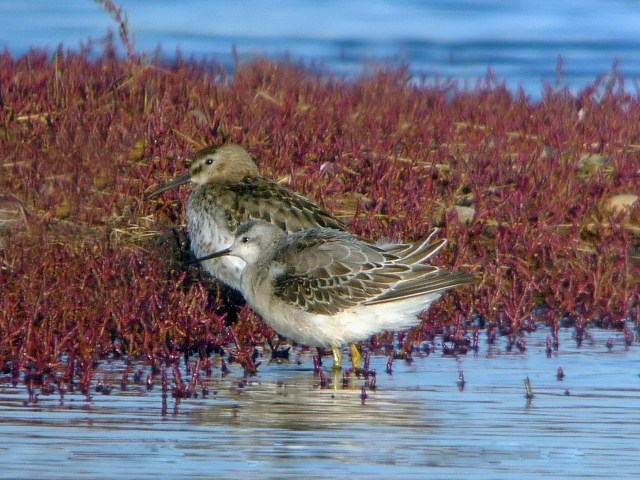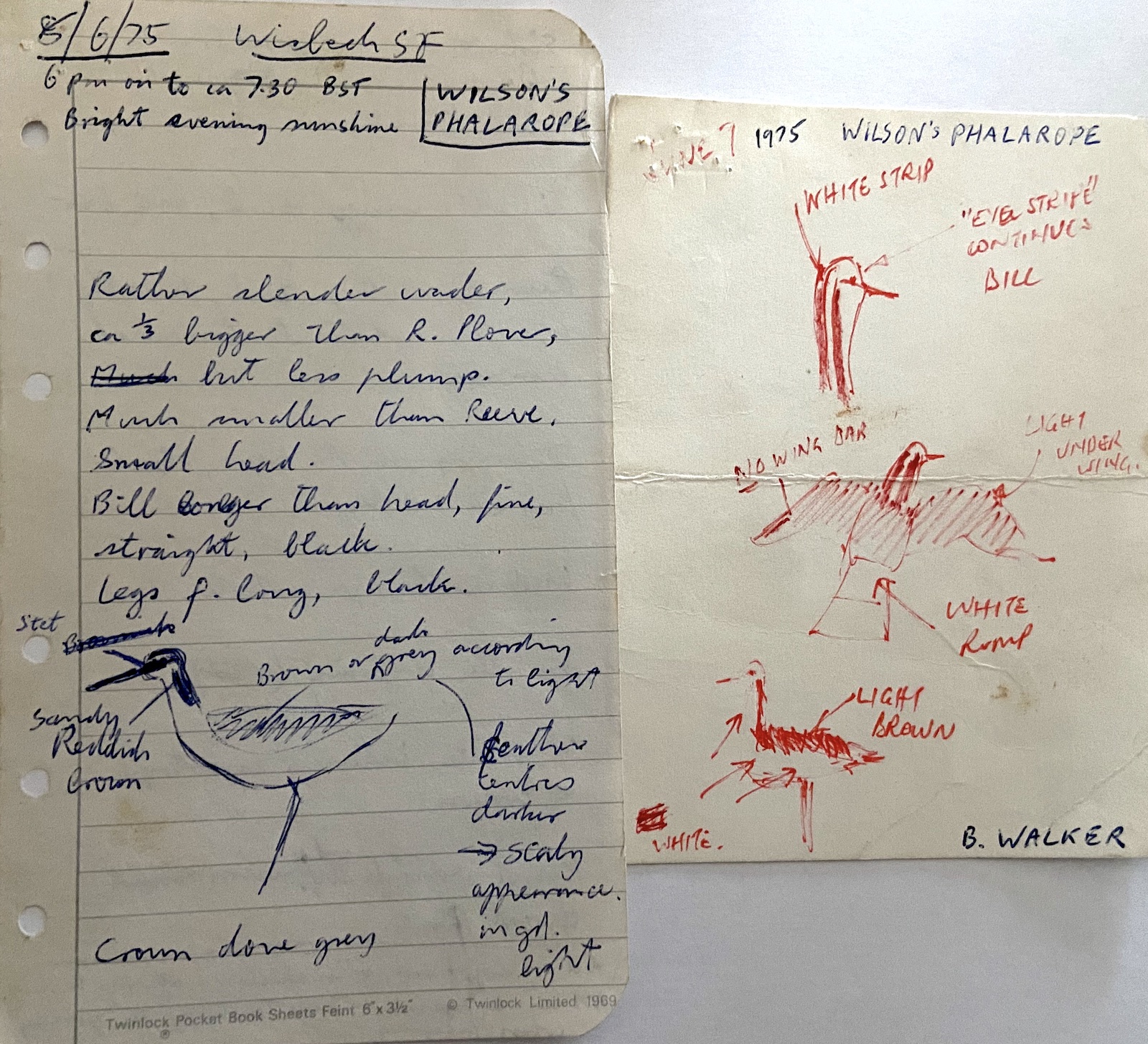Wilson's Phalarope Phalaropus tricolor



| Site | First date | Last date | Count | Notes |
| Wisbech STW | 28/09/1967 | 02/11/1967 | 1 | Joined by a second on 29/09/1967. |
| Wisbech STW | 29/09/1967 | 15/10/1967 | 1 | A different bird to the earlier record. |
| Wisbech STW | 07/06/1975 | 11/06/1975 | 1 | 2CY+ male. |
| Wisbech STW | 29/08/1979 | - | 2 | |
| Gibraltar Point NNR | 11/09/1984 | 05/10/1984 | 1 | 1CY. |
| Anderby Creek | 03/10/1984 | - | 1 | 1CY, regarded as different from that at Gibraltar Point. |
| Covenham Reservoir | 19/08/1985 | 22/08/1985 | 1 | 1CY. |
| Gibraltar Point NNR | 08/06/1987 | - | 1 | Adult female, summer plumage. |
| Chapel St Leonards | 26/09/1987 | - | 1 | 1CY, may have been present since 24th September. |
| Alkborough Flats | 16/09/2008 | 21/09/2008 | 1 | |
| Gibraltar Point NNR | 13/09/2010 | 15/09/2010 | 1 | 1CY. |
| Frampton Marsh | 08/09/2015 | - | 1 | 1CY. |
Finder’s report: Wilson’s Phalarope at Wisbech STW, June 7th, 1975, an early record.
by H. Mayer-Gross and B. Walker
Note: this account is taken from the original BBRC submission and is the first submitted county record we have in our archive. First recorded in Great Britain in 1954, there were three other records in 1975 bringing the British total to 56. At the time, the species had occurred in every month from May to October, with peaks of six in June and twelve in September.
Circumstances
On June 7th, 1975, B. Walker saw a wader feeding on a partially dried out settling tank at Wisbech Sewage Farm (Lincs./Norfolk.). From sketches he made at the time, he later identified it as a male Wilson’s Phalarope. On June 8th, I accompanied him to the sewage farm, and we found the bird on a settling tank near the one where he had first seen it. We watched it for most of the period 18.00-19.30 BST, in bright sunlight, mostly at ranges of 70-100 yd. We both had x8 binoculars and also used a telescope of up to x60. The following description is based on notes taken at the time, amplified, and rearranged for clarity.
Another bird-watcher – from Suffolk, but unfortunately anonymous – accompanied by a small boy, was shown the bird. He claimed previous experience of Wilson’s Phalarope and instantly agreed that this was indeed one. Soon afterwards Malcolm Cowlard and John Mullins saw it and also agreed with the identification.
Description
General – a rather slender wader, about a third larger than Ringed Plover (Charadrius hiaticula) feeding close by, but less plump: thus, its body seemed narrow-chested but deeper-bellied. It was much smaller than a Reeve (female Philomachus pugnax). When seen in flight with a Ruff and a Reeve, there appeared to be about an equal gradation in size between Ruff and Reeve, and between Reeve and phalarope. No call was heard.
Head – seemed small and the bill was a bit longer than the head, fine, straight, and black. The crown was dove-grey. A brownish stripe ran from the bill through the eye and continued behind the eye. There was an off-white area between this and the crown.
Upperparts – the sides and back of the neck were a light (sandy) reddish-brown, with a very noticeable white band running down the centre of the back of the neck. The back looked brown or dark grey, depending on the angle to the light; darker feather centres gave a scaly appearance under the most favourable viewing conditions. The rump was white, the tail white with indistinct dark terminal barring. In flight the wings looked uniformly dark above, with no bar, and very pale underneath. The tail was fanned wide during brief flights.
Underparts – a faint reddish suffusion was seen around the front of the throat, otherwise the underparts were very white.
Bare parts – legs were fairly long, black.
Behaviour – the bird fed by picking with single jabs on exposed mud, and in shallow water, wading up to its belly; it was not seen to swim. It showed some tendency to change direction, making short zig-zags while feeding. It seemed somewhat wary and took to flight with other waders present when there was a general alarm, but after an interval returned to the same task.

Notes and sketches by the observers of the Wilson's Phalarope at Wisbech Sewage Farm, June 1975, from the oiriiginal RC submission.
(Account as per new Birds of Lincolnshire (2021), included September 2022)

